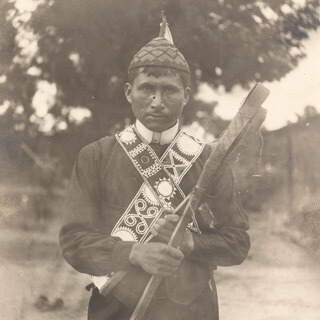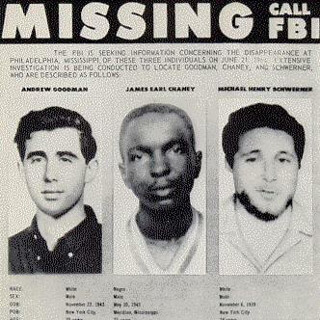Overview
Due in large part to the Mississippi River, the Delta is an environmentally compelling region. Touching on race relations, economic development, and musical and literary creativity, this essay discusses how its geography, demography, and history have made it one of the most distinctive American places.
Essay

Sociologist Rupert Vance wrote in the 1930s of the "cotton obsessed, Negro obsessed" Mississippi Delta as "the deepest South." A half century later, writer Richard Ford called the Delta "the South's South." In the 1990s, historian James Cobb referred to it as the "most southern place on earth." Few other regions within the American South have taken on the overtones of representing that larger section as the Delta has done, but its history shows shifts in meanings ascribed to it, reflecting environmental forces, the dynamics of an evolving biracial society, and the Delta's relationship to broader southern, American, and global forces.
The "Mississippi Delta" is actually the delta of the Yazoo River, in the eastern floodplain of the lower Mississippi River. It is sixty miles at its widest point from the Yazoo to the Mississippi, in what poet William Alexander Percy called "a badly drawn half oval." Elevation goes from 205 above sea level below Memphis to eighty feet at Vicksburg, averaging 125 feet in height from Greenwood to Greenville. Flooding has been endemic, as formative as any factor in shaping the life and culture of the Delta.
Native Americans lived on the land that became known as the Delta from around 1000 B.C. They practiced small-scale farming and took part in a commercial hunting economy with whites after their arrival around the turn of the nineteenth century. The Delta became officially open to white settlement after Indian treaties between 1820 and 1832. One traveler in the 1820s, Paul Wilhelm, described a rich ecology, noting migratory birds, kingfishers, herons, ducks, eagles, and the soon-to-disappear Florida panther. Prevalent trees included sweetgum, hackberry, cottonwood, persimmon, and river cane, the latter growing in dense patches.

Whites and their black slaves soon transformed the land, building vast cotton fields to replace the forests, canebrakes, and marshes, changing the economy, ecology, and visual landscape. Successful agricultural work required reservoirs of slaves and money, making the Delta a region dominated by a planter elite from the early nineteenth century. The Hamptons of South Carolina, one of the South's most famous and successful families, bought land in the Delta in the 1840s, and by the time of the Civil War, Wade Hampton III owned 900 slaves on property scattered over two Delta counties. Greenwood LeFlore was another successful planter, a Choctaw who owned 400 slaves and decorated his home with the finest furniture from France. Large cotton yields and accumulating wealth created a powerful social group, the Delta planters, who would dominate the region's economic and political life for generations.
The Civil War and Emancipation brought major changes to the Delta, challenging the preeminence of the planter definition of the Delta as the site of a slaveholders' empire and forcing them to confront new visions of the Delta among African Americans. Freedmen from across the South saw in the post-Civil War Delta a frontier of opportunity, a relatively undeveloped region without the long settled social arrangements of the eastern South and with land that could be richly productive if cleared. Blacks hoped for land ownership during Reconstruction and asserted their political rights in the Delta, and even with the restriction of political rights at the end of Reconstruction, African Americans continued coming into the Delta through the end of the century in hopes of gaining greater economic opportunity there than elsewhere.

Outside forces helped remake the Delta after the Civil War. Timber companies cleared land for sale, and railroads entered the region, connecting Delta planters to newly accessible markets. The federal government passed flood control legislation, providing funds to begin containing the tumultuous floods that prevented the agricultural utilization of much Delta land before the Civil War. In the early twentieth century, foreign investors began buying and operating Delta plantations; the British-owned Delta and Pine Land Company became one of the world's largest cotton-producing operations. All of these forces nurtured the economic modernization of the region, not as a commercial-industrial site but creating plantations as factories, marked by industrial-like management techniques and close control of costs, including exploitation of a large pool of cheap labor, on which Delta plantations depended. By 1910, tenants operated ninety-two percent of Delta farms, and ninety-five percent of those tenants were African American. New ethnic groups also appeared in the region in this period, including Chinese, Jews, Italians, and Syrians.


Despite their embrace of agricultural modernization, planters nurtured their self-image as an Old South gentry. Their style emphasized personalism and paternalism, and they indeed pursued the good life, with their financial resources enabling frequent travel, elaborate parties and dances, tasteful decoration of homes, the best food and drink, and education of children at fine schools and colleges across the South and the nation. The railroad linked the Delta to New Orleans and nurtured a cosmopolitanism among planters who could afford its pleasures.
Cotton culture pervaded the Delta. David Cohn referred to cotton growing in the Delta as "a secular religion," one that "was the staple of our talk, the stuff of our dreams, the poesy of many of our songs." As the white landowning class prospered around cotton, African American fortunes grew more desperate. Delta society was rigidly segregated along racial line, and blacks living there in the early twentieth century had to face the devastation of their post-Civil War dream of the Delta as a place for upward mobility. They faced declining economic fortunes, political disfranchisement, rising violence, especially lynching, and virtual powerlessness in the criminal justice system. Coupled with inferior educational institutions and poor health facilities, these social problems led African Americans increasingly to head out of the region, especially to Chicago, a main migration location for Delta blacks. The Illinois Central Railroad became a powerful symbol to African Americans of escape from the Delta and connections to a broader world.

African Americans in the Delta produced a vibrant culture that sustained them through hard times. The region produced the blues, a music that grew out of traditional work songs and articulated the sufferings of blacks and the way music could transcend them. The black church also insulated its believers from the traumas of living in an oppressive society. The one institution controlled by blacks under racial segregation, the church offered a sense of self respect and esteem for people who rarely received respect from the institutions and customs of the larger society.
The federal government also helped to define the Mississippi Delta in the mid-twentieth century. It began with the government's reaction to flooding, which continued to disrupt the agricultural economy. Delta people lived through eleven major floods between 1858 and 1922, but the 1927 Mississippi River flood was the worst of all, devastating the Delta, killing between 250 and 500 people and leaving more than 16.6 million acres and 162,000 homes under water. Soon after, Congress appropriated $325 million for an extensive flood control system. The New Deal introduced the most extensive federal government presence in the region since Reconstruction. Planters used New Deal appropriations to their advantage, accepting payments to take land out of production and leaving their tenants with few resources. World War II provided jobs that drew tenants away to the military and defense projects, creating a labor shortage that promoted the consolidation of farm lands, diversification of crops beyond cotton, and the mechanization of plantations.
Beginning with the Dixiecrat movement of the 1948 presidential campaign, the Delta became a stronghold for the final defense of legal segregation. Estimates are that ninety-five percent of the Delta vote went for the Dixiecrat ticket, which included a Deltan, Fielding Wright, as vice presidential candidate. The Delta birthed the Citizens' Councils in the 1950s, which organized intimidation of civil rights advocates and cooperated with state government efforts to defend the Jim Crow caste system.

The civil rights movement nonetheless found crucial support in the Delta, putting forward a vision of the region as a source of African American political influence if its predominantly black population became empowered through enfranchisement and economic improvement. Voter registration drives became the battles that eventually brought political change, leading to increased African American political participation in the Delta. Civil rights leaders like Fannie Lou Hamer, Aaron Henry, and Amzie Moore became central figures in a new iconography of the Delta.
The Delta's writers, musicians, and artists have invested the region with imaginative appeal, from Tennessee Williams's theatrical plays of the decadent white elite, to Robert Johnson's brooding blues of a haunted crossroads in Delta, to William Faulkner's stories of the taming of the natural environment in the Delta. German filmmaker Wim Wenders, in Wings of Desire, portrays a dying man in Berlin who muses on what he has not done in his life—including visiting the Mississippi Delta, still a distinctive place in the imagination. 
Publication Update
In fall 2017, Southern Spaces updated this publication as part of the journal's redesign and migration to Drupal 7. Updates include image and text link adjustments, as well as revised recommended resources and related publications. For access to the original layout, paste this publication's url into the Internet Archive: Wayback Machine and view any version of the piece that predates August 2017.
Cover Image Attribution:
Soybean field. Crittenden County, Arkansas, August 3, 2013. Photograph by Thomas R. Machnitzki. Courtesy of Wikimedia Commons. Creative Commons license CC BY 3.0.Recommended Resources
Brandfon, Robert L. Cotton Kingdom of the New South: A History of the Yazoo-Mississippi Delta from Reconstruction to the Twentieth Century. Cambridge, MA: Harvard University Press, 1967.
Cobb, James C. The Most Southern Place on Earth: The Mississippi Delta and the Roots of Regional Identity. New York: Oxford University Press, 1992.
Cohn, David. Where I Was Born and Raised. Boston, MA: Houghton-Mifflin, 1948.
Dunbar, Anthony. Delta Time: A Journey through Mississippi. New York: Pantheon, 1990.
Grim, Valerie. "Black Farm Families in the Yazoo-Mississippi Delta: A Study of the Brooks Farm Community, 1920–1970." PhD diss., Iowa State University, 1990.
Holland, Endesha Ida Mae. From the Mississippi Delta: A Memoir. New York: Simon and Schuster, 1997.
Taulbert, Clifton. Once Upon a Time When We Were Colored. Tulsa, AZ: Council Oaks Books, 1989.
Willis, John C. Forgotten Time: The Yazoo-Mississippi Delta after the Civil War. Charlottesville: University Press of Virginia, 2000.




